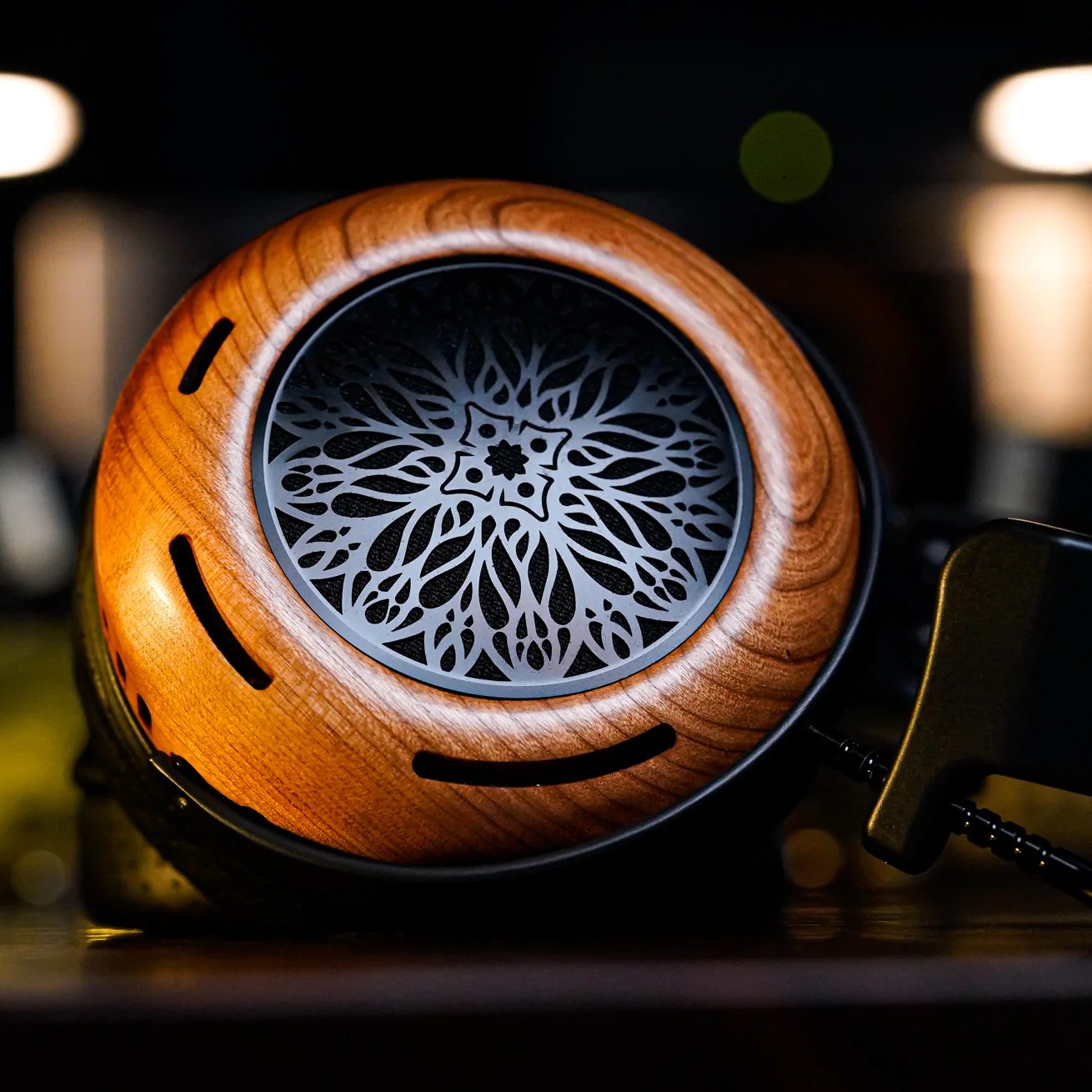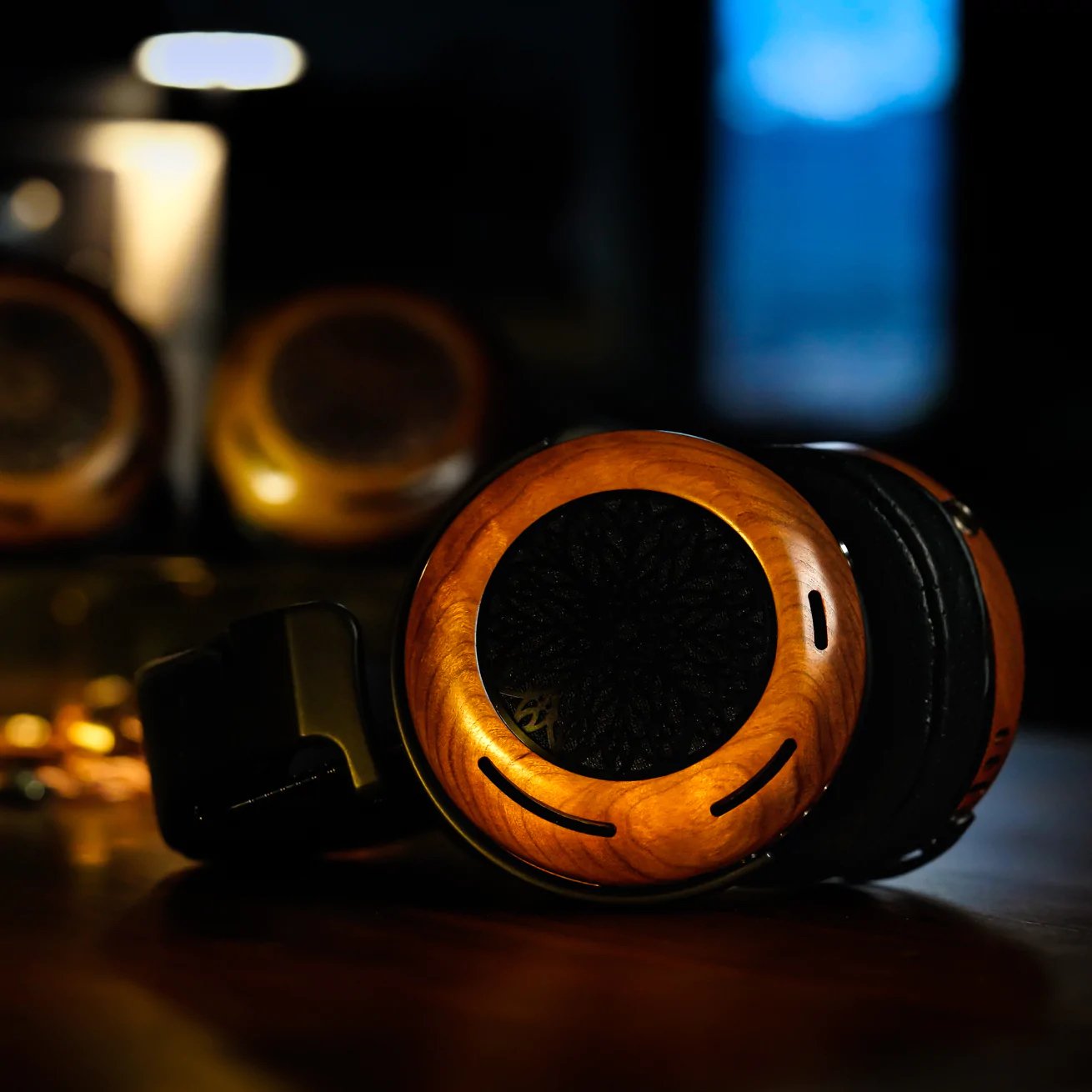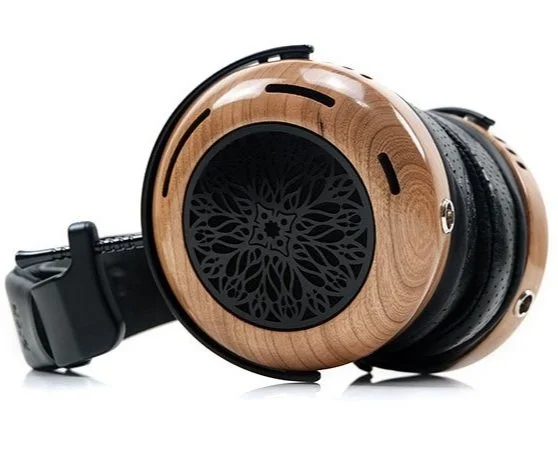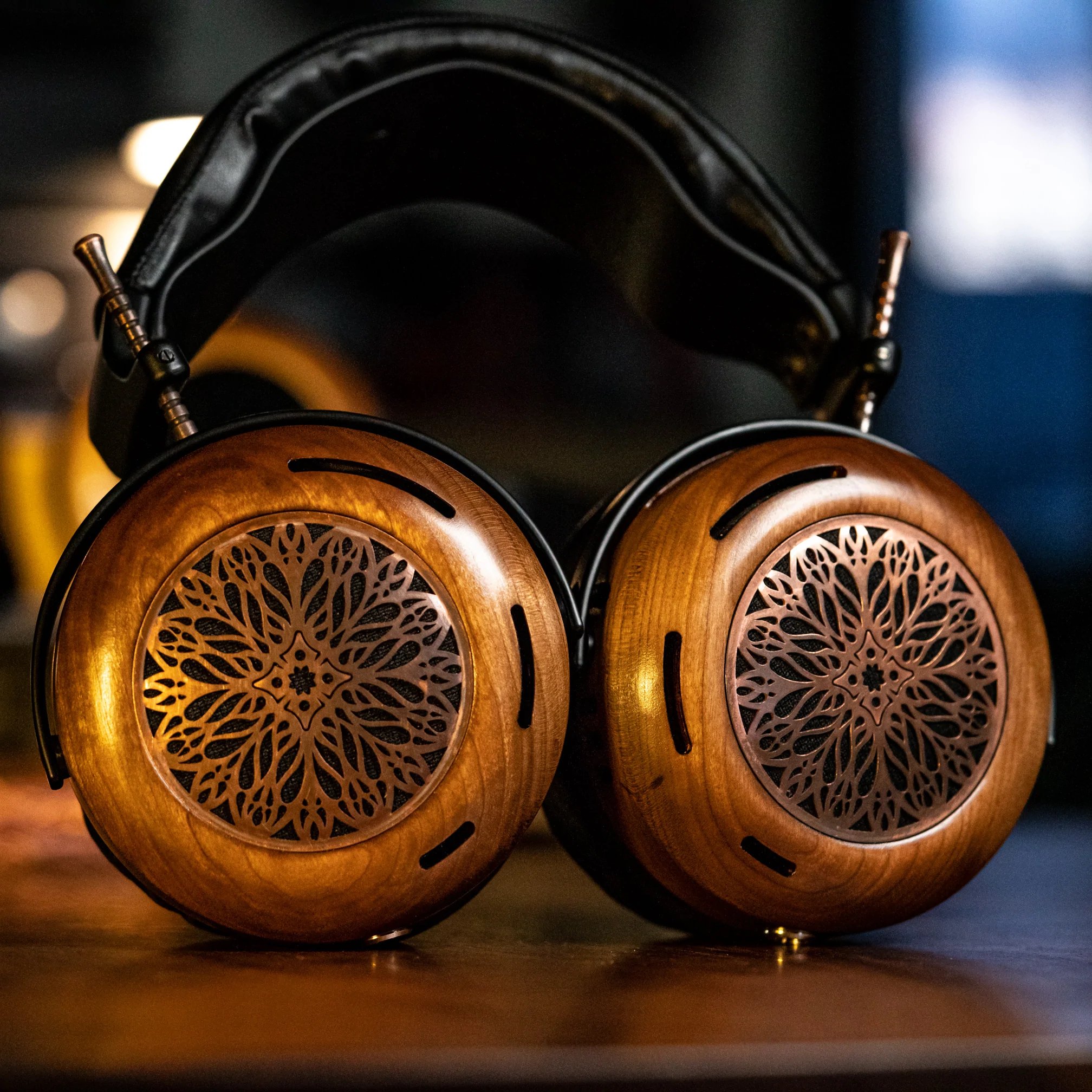ZMF ATRIUM - REVIEW
The Long Awaited Arrival of Headphone Tribridization!
It is nearly two years ago that I first came upon the quite sublime world of electrostatic headphones and headphone amplifiers or, as some call them, “earspeakers” and “energizers”, respectively. The journey into and across this world has been fascinating, eye-opening, and revelatory. It has also, however, shed light on the limitations of other headphone technologies—dynamic and planar magnetic—with regard to transient speed, dynamic shifts, transparency and resolution, as wed to truly immersive musicality.
There was a time, not that long ago, when I believed that the kind of transparency and resolution that electrostatics offered, combined with their musicality, was not a realistic ask, and all these elements simply could not exist together. I was wrong. I now hold a non-expiring, lifelong passport to this electrostatic world.
An electrostatic’s many talents— light-speed transients and dynamic shifts, see-through resolution—are a direct result of decreased mass—no magnets, no moving coils, as STAX, the pioneer in the electrostatic industry, states:
“STAX chose the electrostatic technology for its ability to produce transparent sound, and low weight for comfort/ergonomics, both due to the driver design not employing fixed magnets and moving coils, as opposed to other common headphone driver designs. The minimal weight of the driver ensures a very quick response to the signal, creating a more faithful sound reproduction.”
This, of course, leads to a complete rediscovery of one’s music and especially so if said music is a live recording, or choral or symphonic music at which electrostatics excel. After experiencing what electrostatic headphones do for this kind of music, I would not even contemplate listening to it unless it was with a pair of electrostatic headphones.
However, in terms of the other headphone technologies things have changed! And given the exponential rise of technological discovery and its implementation across all segments of society, worlds can, indeed, collide. This brings me to my review of yet a third ZMF Headphone—the Atrium—which sits at the apex of the ZMF range as its new Top-of-the-Line (TOTL) headphone, and there is more within these gorgeous headphones, a great deal more, than meets the eye or ear.
REFRAIN: Unlike most reviews, this review will be non-sequential, as it will start with how the equipment actually sounds and not the process of physically “undressing” it and/or laying out its various accoutrements, specifications, etc. Think of this review then, as a non-linear movie—Memento, Kill Bill, Pulp Fiction, Eternal Sunshine of the Spotless Mind, The Queen’s Gambit, In the Shadow of the Moon, etc—that, likewise, starts at the end and winds its way to the beginning.
The Sound
This is my third go round with the ZMF line of headphones. The first was with its entry level headphone the ZMF Atticus (HIGH NINES AWARD) and the second was with its former flagship, the Véríté (DIAMOND AWARD). As I said in the ZMF Véríté review relative to the ZMF Atticus, “ZMF Véríté does a good deal better and in every respect.” Well, here we are again and the newest ZMF Top-of-the-Line (TOTL)—the Atrium—exceeds the Véríté in, literally, every respect. I pray that Zach does not come out with an even better headphone, lest I have to repeat myself again and writers dislike that intensely!
The new ZMF Atrium represents a cutting edge design that employs a bio-cellulose driver, adds a patent-pending damping system—Atrium Damping System—, repositions the drivers, and reworks the grill and cup venting. The result—lower distortion, even diffusion, and a more open sound. A further and most profound result is the synthesis or tribridization of three formerly disparate worlds—electrostatic, planar, and dynamic—into one.
The ambiance of a live performance, a chorus, or a symphony is captured by the ZMF Atrium as if it were an electrostatic headphone, and a very good one. All the air and height, the spaciousness and treble reach, are easily brought to life by the Atrium to my shocked and enduring surprise. How is this possible?
The parallels continued with the incredible articulation of words, lyrics and lines that in many cases had finally faced the light of day for the very first time, over decades of listening. Donny Hathaway’s back and forth conversations with the audience on his Live album (Rhino Atlantic) revealed for the first time, and with outstanding clarity and ease, EVERYTHING that was being said. And on Voces8’s “Prayer to a Guardian Angel” (Lux, Decca Music Group) the wording of the third line has long been obscured, and with certain components, seemed to be in another language entirely. I figured it was a recording issue. The Atrium, however, solved the issue and laid bare the wording as had electrostatics before it. Imagine my surprise.
Certainly its combo—Accustic Arts Player II, Mola Mola Tambaqui, LTA Z10e—had a good deal to do with this. But, of course, this wasn’t the first time that I had assembled these same components for a host of headphones—dynamic, planar, and electrostatic. Perhaps the alchemy of the combo was the key that allowed the ZMF Atrium to best not only more expensive dynamic and planar headphones, but even electrostatics as well. There is only one exception—the STAX SR-X9000—which sits easily at the apex of all headphones that I have ever heard to date (things change).
There is also, as embodied by the ZMF Atrium, nuance and refinement, a richness of emotion and authenticity that recall vinyl and reel-to-reel master tapes. No kidding!The combination is sublime in the extreme and compels one into a deep, immersive experience that is almost impossible to pull away from. These are not idle words.
As a direct result, my appetite for music of all kinds was ravenous, more so than it had been with the ZMF Véríté, as live music, and choral and symphonic music were all back on the menu, and the Atrium challenged and even dethroned a couple of electrostatic headphones! The overall experience was immensely enjoyable.
The ZMF’s Atrium’s volumetric cube—sound stage—is immense and challenges all electrostatics heard to date in the areas of import, namely depth, width and height. The Atrium’s abilities to position, layer, and provide spaciousness and air are those of an electrostatic headphone and not merely electrostatic-like. As I said of the Atrium’s brethren:
“…the Atticus peeked in or touched down momentarily on the world of electrostatics, the Véríté stares into that world and lingers, comfortable with its relative abilities.”
The Atrium, in terms of the above, belongs, decidedly, to this world—electrostatic—and it belongs to the planar world and, of course, the dynamic headphone world. Tribridization. I did not think this would be possible for some time to come, even with the rapid technological advancement and the processes currently in play. It is, however, here now.
The ZMF Atrium was partnered with the Accustic Arts Player II CDP, Grimm Audio MU1, the Mola Mola Tambaqui DAC as both DAC and balanced headphone amplifier, the Bricasti M1 DAC, the DENAFRIPS Pontus II DAC, the LTA Z10e HPA/integrated. Cabling was Audience Front Row and power conditioning was handled by the RSX Power8 and TORUS RM20.
Bass
Dave Holland’s Emerald Tears (Emerald Tears, ECM) cues for play and its resolution, clarity, detail is stark and unremembered from previous hearings. The notes from the upright bass appear to emanate from a black-quiet background, fully formed, textured—one hears the material composition of the strings—and rich, tonally and timbrally. In this respect, it becomes a very personal performance and is one of the most compelling listens to of this track, to date. Eiji Oue’s V. Infernal Dance of King Kashchey (Stravinsky, Reference Recording) cues now for play and the opening notes are THUNDEROUS! The bass across this track as rendered via the ZMF Atrium is a Midwestern summer storm—ominous, dark, ground-shaking. The gold of the Atrium’s planar and dynamic traits comes to the fore. With its sibling—ZMF Véríté—I described the opening notes of this track as, “tumultuous, propulsive, beautifully resolved, and fast.” I’m sure, at this point, that you’re not surprised that the Atrium goes one better, and in every respect, in the fashion of a line’s TOTL. As a final test of bass response, I queued up Massive Attack’s “Angel” (Mezzanine, Circa). Angel is not, necessarily, an easy track to render well. Some headphones produce the bass very well, but all else can be, well, marginally congested. Others separate the mix beautifully, but cannot render the bass to anywhere near Holy-Bass-Head-Grail levels. The Atrium sailed through this track beautifully, easily resolving the mix and entering the stygian depths of the Holy-Bass-Head-Grail with fierce determination. I have never heard this track sound more propulsive and more musical and more finely sorted.
While the ZMF Atrium was exquisite with other associated gear, its best synergy was with the Grimm Audio MU1 (via AES/EBU)/Mola Mola Tambaqui combo. Perhaps the subterranean noise floor exhibited by the trio and delivered straight, no ice, no chaser, to the ZMF Atrium was what made all the difference. Mind-boggling.
Midrange
Emily D’Angelo’s “Fólk fær andlit” (enargeia, Deutsche Grammophon) begins. It has a somber, brooding beauty. Its stage—the breadth and depth of the conjured images—is extensive, the images within are fixed and beautifully resolved, and Emily’s voice is of flesh, holographic, centered. Tone and texture, nuance and refinement are truly superb, bringing a “thereness”—as in you are there—to the music. Emily’s portrayal of “Penelope: IV The Lotus Eaters” via the Atrium is the definition of palpability, as she is there, solidly, on stage, while the air of the venue—stage, studio, etc.—wraps around her, and her voice echoes and diminishes in a most natural manner. Olafur Arnalds’ “Árbakkinn” (Island Songs, Mercury (Universal France)) is a last guilty pleasure in what is becoming an overlong review. The Atrium resolves great detail and air, while conjuring tone, texture, richness, and then the weight of poet Einar Georg Einarsson’s voice to a degree beyond even that of the STAX SR-X9000, no small tasks. Breathtaking!
Can a headphone be exceptionally resolving, detailed, flesh-and-bone palpable, tonally and timbrally natural, and sweet? Further, can it also be lightning fast, possessed of light-speed transients, and offer up a wealth of inner detail? The ZMF Atrium says, “Yes.” With one exception to date, the STAX SR-X9000, I am not aware of an electrostatic or planar or dynamic headphone that takes the best of each technology—their gold—and weaves this gold so masterfully into musical whole cloth. Like the ZMF Véríté moved beyond its sibling the ZMF Atticus, the ZMF Atrium moves beyond it.
Treble+
Electrostatic. The speed, the incredible resolution, the air, the vastness of the Atrium’s staging ability, the silken-sweetness of tone/timbre is stunning, truly. And where its sibling—the Véríté—stood a bit short of TOTL electrostatics in terms of air, speed, ‘treble height’, and resolution, the Atrium knows not these bounds.
Emmanuelle Bertrand’s rendition of “Cello Concert No. 1 A Minor, Opus 33, Allegro non troppo” (Saint Saëns: Cello Concerto No. 1 Sonatas No. 2 & 3, Harmonia Mundi) enters transient quick and beautifully played. The strings of her cello are textured, rich, resolute, and brimming with inner detail and insight into both the music and Ms. Bertrand’s playing. Another track, and then the entire album plays through so very quickly via the Atrium’s rendering. Apparently, this happens when one is drawn so completely and willingly into the music. Jordi Savall’s “Les Pleurs, for 2 basse de viole” (Tous les matins du monde, Alia Vox) now plays and it too, via the Atrium, carries the selfsame texture, openness, incredible resolution, and sublime tonal/timbral beauty. The Dave Brubeck Quartet’s “Take Five” (Time Out, Columbia Records) rolls in from the playlist and the detail, the air-infused cymbals, the realism, the speed mean the Atrium is again being it electrostatic self. This is another example of the woven gold of three headphone technologies as one or, when needed, just one. Sublime.
The Wrappings and Accessories
The ZMF Atrium like its brothers comes in a substantial, black, hardened Seahorse SE 430 case. It is this case that assures the heirloom component contained within finds its way intact to one’s heirs, or loved ones, or to very lucky friends.
The case opens to reveal a snug, foam-lined enclosure that provides further assurance of safety to the ZMF Atrium seated within. Yes, like its brothers, the sight of the Atrium is breathtaking. The Cherry wood, in which a black grill is inset, is truly beautiful. And the high-grade, leather ear pads are what one might call sumptuous. Though a vegan suede option is available as well. You will most probably stare at it for a while. I certainly did. Also included within the case are:
ZMF Stock Braided Cable and OFC Cable
ZMF Universe Perforated Pads and 1 choice set
ZMF Owner's Card
Lifetime Driver Warranty
The wrappings and accessories speak again to a customer focused integrity, an attention to detail, masterful craftsmanship, and technological knowhow. There is a fierce desire it seems on the part of ZMF to bring value, music and enjoyment to each of its customers. There are those manufacturers for whom this is not even a tertiary goal. I applaud this Mom&Pop operation for excellence of craftsmanship, technological prowess, and customer focused integrity. Bravo.
Design—Look, Feel, and Technology
Exquisite. And even this seems to pale as an attempt to describe the Atrium in its Cherry wood form. The Atrium, like its brothers, is functional Mid-Century Modern art, and it might well receive high favor from the masters of that craft—Eames, Evan, Noguchi, Jacobsen.
Technology and Specification
ZMF Atrium
Type: Open-back headphones w/Bio-Cellulose, w/Atrium Damping System
Wood type: Cherry
Impedance: 300 Ohms
Sensitivity: 97dB SPL / 1mW @ 1kHz
THD: 0.1% @ 1kHz / 100 dB SPL
Frequency response: 10Hz–25kHz
Weight: 430g
Cables provided: 1 x ZMF Stock
Carrying case: Seahorse SE 430
Warranty: Lifetime for Drivers/2 Years Parts and Mechanical
Conclusion
Wow! I’ve just come upon a headphone—the ZMF Atrium—that bridges three separate headphone technologies/worlds in a single form. And not in a slipshod fashion, given that it rises to TOTL status across all three worlds and at nearly half to one third the cost of the reigning TOTLs. Further, it does all of the above while being absolutely gorgeous.
The Atrium’s abilities are without question, and to date it is without a like competitor that can so successfully and easily bridge the three technologies/worlds. In this respect, the Atrium stands alone. A salute must be given to Zach, Bevin, and ZMF. Salute!
The Atrium is also very congenial in that it will perform exceedingly well with all partners—DAPs, desktop kit, HiFi, and Ultra HiFi. Though there was considerable synergy with the Mola Mola Tambaqui, Accustic Arts Player II, LTA Z10e, HeadAmp GS-X Mini, etc. If you are first and foremost a music lover the Atrium will not fail to draw you in via its numerous talents. It is a little as though you were sitting on the event horizon of a Black Hole, another situation impossible to escape being drawn into.
Well, in terms of headphones, it almost seems anticlimactic to honor the ZMF Atrium with our highest award. But it has earned that award by ticking off boxes in every category of importance for headphones and moving past all of its worthy competitors, save one—the STAX SR-X9000 ($6,200)—with relative ease. Without further delay, the ZMF Atrium receives our highest honor—the DIAMOND AWARD—for its ability to transcend worlds via the juxtaposition of the best traits/abilities gathered from each of the three headphone worlds.
Pros: An electrostatic/planar/dynamic headphone—tribrid—in dynamic headphone clothing. Outstanding musicality, richness of tone/timbre, transparency, and resolution. Price to performance ratio. The Seahorse case. Gorgeous aesthetic.
Cons: None.
THE SYSTEMS
1.
GRIM AUDIO MU1+
MOLA MOLA Tambaqui
LTA Z10e
MEZE EMPYREAN
ROSSON AUDIO RAD-0
ZMF ATTICUS
AUDIENCE FRONT ROW CABLES
TORUS RM20
2.
Roon Nucleus+
DENAFRIPS Pontus II
HEADAMP GS-X MINI
MEZE EMPYREAN
ROSSON AUDIO RAD-0
ZMF ATTICUS
AUDIENCE FRONT ROW CABLES
TORUS RM20
3.
MOLA MOLA Tambaqui DAC as Headphone Amplifier
The Company
ZMF
ZMF ATRIUM ($2499.99)
www.zmfheadphones.com
contactZMF@gmail.com







